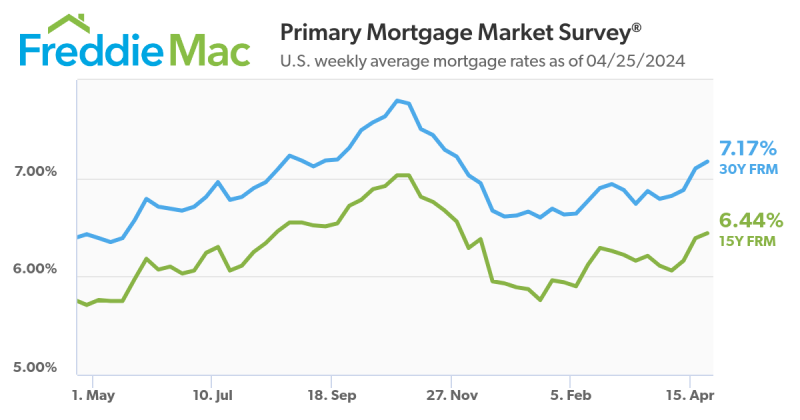Advertisement
Taking Control of Your Marketing

Two runners approach a hill. One runner walks up the hill and the other, runs up the hill. Which is a better strategy for a long distance race? Well, I’m not a runner, so I really don’t know which is a better strategy, however, when we look at this from a marketing perspective, the answer becomes a lot more clear. Let’s look at it again.
Two businesses hit a downturn in the market. One business seizes all marketing activities. The other, decides to invest more into marketing. Which is a better strategy for long-term business success?
The answer to that question comes down to understanding the value of the incremental gain earned while running versus walking up a hill. In running, you expend energy to gain distance. In marketing, you spend money to gain customers. The big difference is that the energy spent running harder does not translate into more energy for the race. In fact, you’ll have less energy to finish the race hard. In business, however, the money spent on marketing translates into more customers now, which means more cash to invest in more marketing to get even more customers.
An unfortunate common practice for companies at the onset of a poor economy is to begin cutting operating costs. Even more unfortunate is the fact that marketing budgets are often the prime targets of those cuts. It has been proven time and time again that it’s not a good idea to reduce marketing efforts during a recession. This short-term approach saves money, but leaves your brand in a less competitive position whenever the economy recovers. And over the years, research has confirmed that the best strategy in terms of long-term return on investment (ROI) is to increase marketing efforts during an economic slowdown.
Marketing during a downturn isn’t the only challenge we face. Today, a great deal of people are focused on the back end of the mortgage transaction. With defaults at historic levels, mortgage fraud out of control and constant government pressure to help homeowners in distress, mortgage loan servicers have their work cut out for them. But soon, very soon if the federal government's academic advisors are correct and we have exited the recession, the focus will return to the point of sale. It will be here where the future of the mortgage industry is being written, for only by closing new loans will companies remain in business and succeed as we move into the recovery.
We are already seeing some excellent signs. Some pockets of secondary market investment are starting to get active and we've already seen at least one mini-refi boom this year. Those who believe that this new business is only the result of government bailout funds are missing the point. The government can spark interest on the part of prospective borrowers, but only lenders can close the deals. And only lenders who have a good understanding of what it means to market to the new generation of mortgage borrowers will be around.
Most discussions of marketing are complicated by confusion about how it relates to sales. While sales are the results of good marketing, they are not at all similar disciplines. While sales is what ultimately makes the company money and keeps the machine working, marketing tells us who to sell to, why they want our product and what salespeople must say to get them to close. The company-centric (or supply side) “Four P’s of Marketing:” (Product, Place, Price and Promotion) now need to be accompanied, if not replaced with, the customer-focused “Four C’s of Marketing:” Customer value (product), Cost to the customer (price), Convenience for the buyer (Place) and Communication (Promotion).
Beyond that, marketing is the machine that keeps future borrowers on the line until they are in the “buy zone” and ready to sign an application. While loan officers know they must maintain these databases and stay connected to these prospects, it can be very difficult to do so on a regular basis. Without that kind of marketing support, sales become much more difficult, referrals are harder to get and customer loyalty goes out the window.
So what do we do?
Gary Kellar, Dave Jenks and Jay Papasan wrote a game-changing book entitled The Millionaire Real Estate Agent. Their research into what they call “mindshare” illustrated that the 92 percent of sellers will list their home with either the first or second agent they meet with and 82 percent of buyers will sign a contract with either the first or second agent they meet with. That means that you’d better be number one or number two or you’re not even in the game!
We see the same lack of loyalty from customers in the mortgage industry today. While the industry has worked hard to increase customer satisfaction, and the numbers are promising, it is not translating into customer loyalty. We're still seeing almost every borrower go to a different lender for their next loan. I believe this is because no one in our industry is taking control of the marketing process.
Who owns the marketing process?
I strongly believe that marketing should be owned and managed by the company so that originators can focus their time, energy and money on selling and building relationships. Sounds great, but there is one big problem. For a mortgage company to “own” marketing, they have to pay for it and where will they find that money? For too many years, mortgage companies competed for the industry’s top talent through the promise of high commission splits. Over time, as those splits continued to rise, there was less and less money available to spend on supporting, training and developing the originator. In the end, the originator was left with not only the task of selling, but they also now had to spend their own money to implement marketing systems. We all know that dollars spent on an individual basis go a lot less further than collective dollars. One-hundred originators individually spending $250 per month on marketing with no cohesive message generates a pretty weak impression on the market. Now, if you pool the $250, you can now spend $25,000 per month into a cohesive message and effort. Much more powerful!
In the past, mortgage lenders went down one of two paths when it came to marketing. Either they had a process that they subjected every loan officer to as a matter of course, or they left all of that to the front line originators, letting the best rise like cream to the top.
As you might imagine, those loan officers that did the best job of marketing to their prospects on a regular basis, closed the most loans and earned the most commissions. The top producing loan originators do a few important things consistently. After years of training and consulting with some of the nation’ top originators, I can tell you that when it comes to database building, mining and maintaining, these guys are experts and they spend a lot of money to do it. They have teams of people whose sole job is to execute marketing best practices similar to Kellar Williams’ 8 x 8 (eight touches in eight weeks) and 33 Touch (33 touches per year) programs. The ROI on campaigns of that nature have been proven and easily justify the expense of a full-time person. Sadly, the amount of work and expense to properly execute those campaigns on a regular basis prohibits the majority of originators from being able to enjoy the benefits of such activities.
e-mail marketing to the rescue … NOT!
I’m not saying that I don’t like e-mail marketing because I do. What I am saying is that the days of uploading your e-mail marketing list to an online service that kicks out an e-mail a few times a month are over. In the beginning, it was a very powerful too, but the influx of automated spam messages and the continued abuse of people’s personal information has forced e-mail spam filters to tighten up. I personally know of several owners of e-mail marketing systems who are constantly testing to see if they receive the e-mail they send out, and some of the marketing messages don’t even clear their own spam filters.
Multi-channel marketing
Even when the e-mail does get through to us, we've all seen so many e-mail marketing messages that they don't even register on us before we've clicked the delete button. It's like the check engine light in our car, if nothing bad happens right away by ignoring it, we eventually learn not to take it very seriously. After a few weeks, we don't even see it anymore. It’s not news to any of us that there's very little power in solely using e-mail as your communication and marketing tool.
Today, it takes a combination of touches from different channels (or media) to keep prospective borrowers engaged. Borrowers are alerted to messages in one medium, say e-mail, but will respond and engage with companies that approach them through multiple avenues, such as e-mail combined with social networking sites, YouTube videos and a personal phone call. The problem, of course, is that loan officers don't the have time, expertise and money to do this type of marketing, much less generate the content it takes to provide the messages for those media. Some outsource it but most, cross their fingers and do nothing in hopes that maybe the statistics won’t apply to them.
Marketing responsibility falls to the lender
In the end, it's up to the mortgage lender to provide the marketing that will provide a steady stream of sales leads to the loan officers. In fact, it makes good business sense to do so. But here again, we run into the challenge of recruiting the nation's best loan originators and paying the high commissions required to get them to come aboard, there is little money left for marketing purposes.
Soon, many lenders are going to be forced to re-think and re-structure how they compensate originators, which will inevitably lead them re-think how they are going to retain top talent. Herein lies the opportunity. Lenders that are able to find ways to offer ancillary value that originators are able to monetize are going to be the big winners. Most likely, the originator’s compensation will be perceived as going down, but if done correctly, lenders will be able to successfully reduce the cost of business to the originator by taking on such expenses as marketing. The positive result will be more business generated at a lower cost to the originator. While there isn’t a magic formula as of yet, I can guarantee you that we are going to see strategies like this pop up all over the place.
Hidden opportunity
As everyone rushed to make the move to e-mail marketing, traditional printers were somewhat left behind in the dust. The printing industry has been under heavy pressure coming from online adverting and falling prices for traditional mass media. While advertising online may not always be cheaper than doing so in print, it comes without the cost of printing or paper. All of this is taking business away from printers.
Consequently, printing companies are hungry for business. They have streamlined their operations and have added technologies that allow them to do some great things for marketers. At MortgageDashboard, we chose to fully integrate Cross Media’s LeadStar marketing engine into our new loan origination software (LOS) and customer relationship management (CRM) system. They are a perfect example of what is possible when you combine the expertise of a traditional printer and the power of variable data printing to execute marketing best practices. With their technology, they can offer their clients individually-printed marketing pieces printed directly from a database at an affordable price. The ability to automate certain marketing and communications that were personalized and delivered through multiple channels based on strategically placed triggers throughout the loan process was a dream come true for me. The more customized a direct mail marketing piece is, the more effective it will be.
One of the advantages to the company for handling this type of marketing on behalf of its mortgage originators is that should an originator leave the company, a simple change to the database, perhaps the addition of a new originator’s name and photo, and prospects may not even notice the change if the company's other branding remains the same.
It falls on the shoulders of the company to seek out these marketing opportunities and make sure that prospects are getting attention regularly. This will require firms to either bolster the staff in their marketing departments to handle the content generation, media buying and database maintenance responsibilities; outsource it to a firm that can handle it for them; or invest in a technology to help them streamline and execute their marketing plan. Those firms that keep the work in-house must be prepared to play a numbers game.
Database math
When Gary Keller looked into the habits of the most successful real estate agents in their industry, they learned that marketing was less about the particular sales messages that the salesperson used and more about the different ways the prospect was touched and how often.
Their research indicated that the nation's best agents had two databases, one that was comprised of past customers and people they knew (their “met” list), and the other consisted of a targeted group of prospects, typically a purchased list in a specific area code or neighborhood (their “not met” list). The agent would systematically farm both lists. It turned out that, if the agent sent a postcard to every person in the “not met” database once each month for 12 months, Kellar Williams calls this approach the 12 Direct program, they would earn one new transaction for every 50 contacts they mailed to. In other words, they got a two percent response rate. When it came to marketing to their “met” database, Kellar’s book recommended a two-step approach. Step one would be to touch every new prospect eight times in eight weeks, then follow up with a total of 33 touches throughout the year. Those touches consisted of e-mails, postcards, drop-offs, gifts, etc. That strategy yielded two deals for every 12 people they marketed to (or a 17 percent response rate). The value of this research is realized when you utilize these metrics to not only accurately determine what your marketing activities should be to reach your desired income level, but also, you could calculate the cost of not marketing to your clients.
These metrics are consistent with the mortgage industry. The Mortgage Bankers Association (MBA) reported that 8.7 percent of your closed clients will refinance each year and the U.S. Census Bureau stated that 6.8 percent of the nation’s population will purchase a home each year. Combine those numbers and the end result is that 15.5 percent of your database will be in need of a new loan each year. For example, if an originator has a database size of 500 people, that means that 77.5 loans will happen, but the question is, “Will they be yours?” According to the research and stats we stated previously on the subject of mindshare, if you are number one or number two, the chances of those loans coming to fruition is pretty good. It’s not like I need to twist the knife any further, but if the average fees on a loan are $3,000, then that means there is in excess of $232,000 of opportunity in a 500-person database. Even if we are half-right with these numbers, it still translates into a huge opportunity for those can properly execute this plan. That’s what we call database math.
Other results that the nation's top agents were enjoying came clear after the research, but they all said basically the same thing. Once the metrics were worked out and the agent knew how many touches were required to produce a sale, the marketing function was reduced to a numbers game, and the most successful agents keep doing the work.
Now, the federal government is working harder to make it possible for home loan borrowers to shop around for the right lender. While that has traditionally been harder to do here, the government is not likely to stop moving the industry in that direction. That means that mortgage loan officers will soon face a similar challenge and will need to remain in the forefront of the prospect's mind.
This will prove increasingly difficult for mortgage lenders who are dealing with legal and investor compliance, technology, mortgage fraud and a host of other issues critical to their business. Those who are able to deal with these pressures without letting their marketing suffer will succeed.
Many say that we are living in the “Information Age,” but I no longer think that’s true. I believe we are now living in the “Implementation Age.” You can do a quick Google search and receive any information you want, but that data alone benefits you little. It's what you do with that information that matters. The very same is true of marketing. Many know that it's the number and quality of prospects that leads to future business. Few have the wherewithal to implement a practical marketing program that works. I hope this information will help shift focus away from the upfront cost of marketing to the real question of what is it costing you NOT to market to them.
Rene F. Rodriguez is a corporate business strategist, acclaimed speaker and trainer, and chief executive officer of MortgageDashboard. He may be reached by phone at (612) 310-4010, e-mail [email protected] or visit www.mortgagedashboard.com.
About the author





